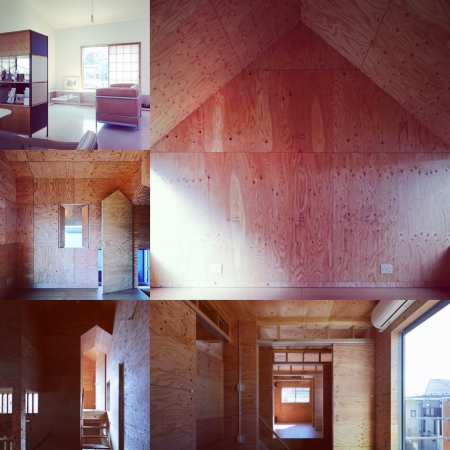抽象度高く生活空間をつくる
2階建てや平屋でも屋根直下の部屋の天井は、屋根形状なりに仕上げることが多かった。それは天井の上はすぐ屋根で空があることを表現したかったのかもしれない。あるいは、その部屋が空に近い、空と隣り合わせということを暗示したかったのかもしれない。そうすることで空間に変化をつけ暮らしに影響を与えようという意図がわかる。
別の見方をすると、天井を屋根形状なりに仕上げることでその部屋が存在するための具体的な証拠を得ようとしたのかもしれない。生活空間と考えれば具体的な何かが欲しくなる。ならば、生活空間と考えなければ具体性は必要なくなり、抽象度を高めるために天井を屋根形状とは関係なくつくることことになるかもしれない。どちらにせよ用途が住宅ならば生活空間にはなる訳だから、天井を屋根形状とは関係なくつくり、抽象度を高めた生活空間を試みる方が面白そうだ。
"Creating a living space with a high degree of abstraction"
Even in two-story or one-story houses, the ceiling of the room directly under the roof was often finished according to the shape of the roof. It may be that he wanted to express that there is a roof right above the ceiling and there is a sky. Or maybe he wanted to imply that the room was close to the sky, next to it. By doing so, you can understand the intention to change the space and influence the living.
From another point of view, the ceiling may have been finished in the shape of a roof in an attempt to obtain concrete evidence for the existence of the room. If you think of it as a living space, you want something concrete. If so, if we don't think of it as a living space, there is no need for concreteness, and in order to raise the degree of abstraction, we may end up making the ceiling regardless of the shape of the roof. In any case, if the purpose is a residence, it will be a living space, so it seems more interesting to create a living space with a higher degree of abstraction by making the ceiling independent of the shape of the roof.


